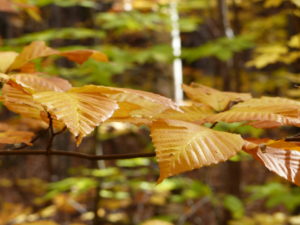Can plants create great literature? Of course they can, plants can do anything.
I’ve long been fascinated by the link between writers and the greenery that surrounds them as they create their masterworks. Whether they write among clipped hedges or untamed wilderness, authors absorb their environment, and it influences their work in countless ways.
Robert Louis Stevenson was bewitched by gloomy Adirondack pine forests. Rudyard Kipling was crazy for Vermont sugar maples. Marjorie Kinnan Rawlings bathed her soul in Cross Creek among the orange groves and water lilies. For Rachel Carson it was seaweed in her beloved Maine tidal pools. From O. Henry strolling in Central Park to Robert Frost lolling in a New England meadow, plants—and in a broader sense the landscape that the plants create–are always present in their writing.
 But no one ever notices plants. They’re never the protagonist, they’re always the backdrop to the action, the stage the scene is set on. Botanists (who are more than a little miffed about this) have given a name to this common human tendency to ignore plants: green blindness.
But no one ever notices plants. They’re never the protagonist, they’re always the backdrop to the action, the stage the scene is set on. Botanists (who are more than a little miffed about this) have given a name to this common human tendency to ignore plants: green blindness.
The term was coined in 1998 by two botanists, Elisabeth E. Schussler and James H. Wandersee, who also called it “plant blindness” to distinguish it from literal colorblindness. They defined it as “the inability to see or notice the plants in one’s own environment, leading to the inability to recognize the importance of plants in the biosphere and in human affairs.”
But it’s not an inability so much as a habit—a very ancient habit. It’s part of our genetic hardwiring. Humans are designed to respond to things that look like us—things that have two eyes, a nose and a mouth. There’s a strong human tendency to see a face even in inanimate objects (glance at an electric socket, for example.) Plants just don’t register as animate.
The human brain can’t process every single one of all the millions of things it can see in a glance. So the brain, unconsciously, picks and chooses what to focus on. When we scan a location, our inner caveman looks for threats—sudden movement, a gleam of color, anything out of the ordinary. As Wandersee says, “plant blindness is the human default condition.” The plants just blend into a green blur, a sort of botanical wallpaper.
But great literature is all about plants. Well, maybe that’s just a teeny overstatement. But I love to visit the homes and workplaces of great writers and see how their real world was recreated in their words. Considering recent research into nature and the effects it has on brain function, stress reduction, and creativity, the idea that plants can affect writers might not be totally crazy.  The view from a writer’s window helps create the words on the page.
The view from a writer’s window helps create the words on the page.
Fertile soil creates a fertile imagination. And great literature, like a plant, is rooted in the soil.
For more on the homes, gardens, meadows, and forests of great writers, search the category “Unmowed Authors” on this site.
Or click here for:
Robert Louis Stevenson in Samoa
Laura Ingalls Wilder on Plum Creek
Laura Ingalls Wilder in Kansas
Laura Ingalls Wilder in South Dakota
more to come!





Recent Comments